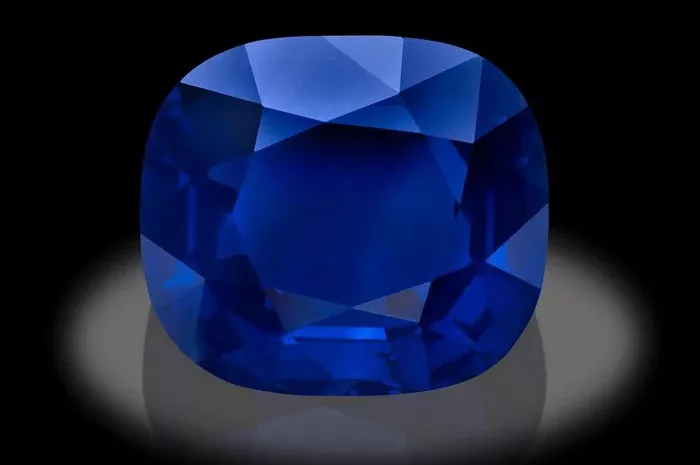Emerald cut purple sapphires are captivating gemstones. Distinguishing between good – quality and poor – quality specimens is crucial for both consumers and collectors. This process involves evaluating multiple aspects, including color, clarity, cut, and carat weight. Each of these factors plays a significant role in determining the overall quality and value of the emerald cut purple sapphire.
Color
Hue
The hue of a purple sapphire is a fundamental aspect of its quality. A high – quality emerald cut purple sapphire should have a vivid and pure purple hue. The color should be distinct and not leaning too much towards other colors such as blue or pink. For example, a sapphire with a bluish – purple hue may be less valuable as a pure purple sapphire. The most desirable purple hue is often described as a rich, royal purple.
Saturation
Saturation refers to the intensity of the color. A good – quality emerald cut purple sapphire will have high saturation. This means that the color is intense and not diluted. A highly saturated purple sapphire will appear more vibrant and eye – catching. In contrast, a low – saturation sapphire may look dull or washed – out. For instance, a purple sapphire with a saturation level that makes the color seem faded may be of lower quality.
Color Uniformity
In an emerald cut purple sapphire, color uniformity is also important. The color should be evenly distributed throughout the gemstone. Any significant color zoning or areas of different color intensity can detract from the overall quality. An emerald cut purple sapphire with a consistent color across its surface is more desirable. For example, if one side of the gemstone is a much darker purple than the other, it may not be considered as high – quality.
Clarity
Inclusions
Clarity in purple sapphires is determined by the presence of inclusions. Inclusions are internal features such as crystals, fractures, or other minerals trapped within the gemstone. In a high – quality emerald cut purple sapphire, inclusions should be minimal. The fewer inclusions there are, the better the clarity. For example, a sapphire with no visible inclusions to the naked eye is considered to have excellent clarity. However, some inclusions may be acceptable depending on their type, size, and location.
Clarity Grade
There are different clarity grades for purple sapphires. The highest – quality emerald cut purple sapphires typically fall into the eye – clean or near – eye – clean category. This means that when viewed under normal lighting conditions, no inclusions are visible or only very minor inclusions are present. Sapphires with more visible inclusions will have a lower clarity grade and, consequently, a lower value. For instance, a sapphire with numerous large inclusions that are easily visible will be of a much lower quality.
Cut
Proportions
The proportions of an emerald cut are crucial for its beauty and performance. In an emerald cut purple sapphire, the length – to – width ratio should be appropriate. A well – proportioned emerald cut will enhance the appearance of the color and the overall sparkle of the gemstone. For example, a ratio that is too long or too short may make the sapphire look unbalanced or not show off its best features.
Facet Alignment
Facet alignment is another important aspect of the cut. In an emerald cut purple sapphire, the facets should be precisely aligned. This ensures that light is reflected and refracted in a way that maximizes the gemstone’s brilliance. If the facets are misaligned, it can result in a loss of sparkle and overall visual appeal. For instance, when light enters the gemstone, misaligned facets may cause the light to scatter in an unappealing way.
Depth
The depth of the cut also affects the quality of the emerald cut purple sapphire. A proper depth is necessary to allow for the optimal amount of light to enter and exit the gemstone. If the cut is too deep, light may be trapped inside, resulting in a dull appearance. If it is too shallow, light may leak out, also reducing the gemstone’s sparkle. For example, a sapphire with an improper depth cut may not have the desired level of brilliance.
Carat Weight
Size and Rarity
Carat weight is a measure of the size of the emerald cut purple sapphire. Larger sapphires are generally more rare and, therefore, more valuable. However, it is important to note that other factors such as color, clarity, and cut also play a significant role in determining the overall value. For example, a large sapphire with poor color or clarity may not be as valuable as a smaller sapphire with excellent color, clarity, and cut.
Market Perception
The market perception of carat weight can also influence the value of emerald cut purple sapphires. In some cases, certain carat weights may be more desirable due to cultural or market trends. For instance, a one – carat emerald cut purple sapphire may be more in demand than a 0.9 – carat sapphire, even though the difference in size is relatively small.
Conclusion
In conclusion, evaluating the quality of an emerald cut purple sapphire requires a comprehensive assessment of color, clarity, cut, and carat weight. Each of these factors is interrelated and contributes to the overall beauty and value of the gemstone. By understanding these aspects, one can better distinguish between good – quality and bad – quality emerald cut purple sapphires, whether for the purpose of purchasing, collecting, or simply appreciating these magnificent gemstones.
Related topic:
- Can Kumbha Rasi Wear Yellow Sapphire
- Can I Wear Emerald and Yellow Sapphire Together
- Can I Wear Topaz Instead of Yellow Sapphire?


